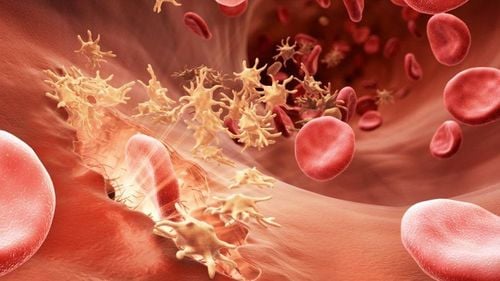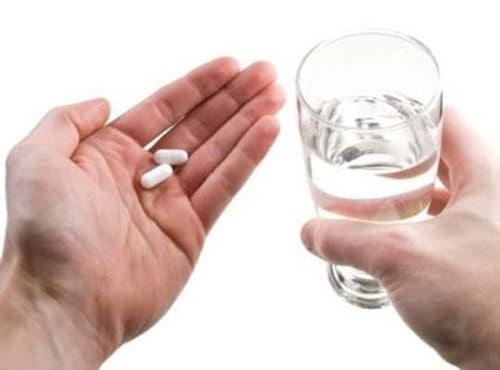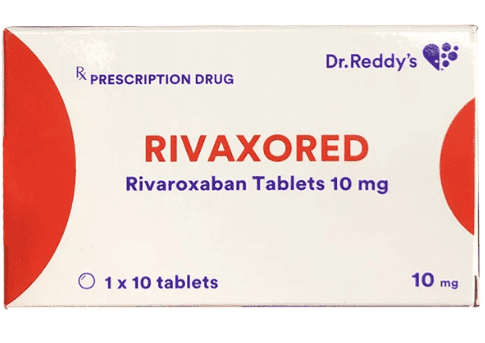This is an automatically translated article.
Gemapaxane with the main active ingredient is Enoxaparin, a substance known for its anticoagulant properties that help prevent the formation of blood clots. The drug is marketed with many different strengths such as: Gemapaxane 6000, Gemapaxane 4000,...
1. What is Gemapaxane?
Gemapaxane with the main active ingredient Enoxaparin sodium is a drug belonging to the group of anticoagulant drugs, which is prepared in the form of an injection. There are 3 types of Gemapaxane on the market: Gemapaxane 6000 , Gemapaxane 4000 , gemapaxane 2000.
These Gemapaxane injections are all packaged with 6 syringes in each box, each with a grade 1 glass body, attached stainless steel needle and has an outer needle sleeve. However, the content of Enoxaparin in each syringe of each type is different: with Gemapaxane 6000 is 6000 IU/0.6ml, with gemapaxane 4000 it is 4000 IU/0.4ml and Gemapaxane 2000 is 2000IU/0.2ml.
2. What are the uses of Gemapaxane injection?
The active ingredient Enoxaparin in Gemapaxane injection is an anticoagulant that helps prevent the formation of blood clots, so the drug is used to treat the following cases:
People with deep vein thrombosis Pain Pain Unstable angina In combination with Aspirin for treatment of myocardial infarction without Q wave Prevent thrombosis causing deep vein thrombosis in high-risk cases such as: people having hip and knee replacement surgery, bedridden , adults over 40 years old having abdominal surgery, obesity, heart failure grade 3 or 4, acute infection, acute respiratory failure or acute rheumatic fever,... Prophylaxis of thrombosis in the extracorporeal circulation when the patient hemodialysis.
3. Some things to keep in mind before taking Gemapaxane
You should not use Gemapaxane if you are allergic to Enoxaparin, Heparin, Benzyl alcohol, or pork products, or if you have:
Are experiencing bleeding or uncontrolled bleeding or low platelets in the blood after tested positive for a certain antibody when using drugs that contain enoxaparin within the past 100 days.
Gemapaxane may make you bleed more easily, especially if you have:
Bleeding disorders ; Hemorrhagic stroke ; Infective endocarditis; Gastrointestinal bleeding or ulceration; The enoxaparin in Gemapaxane can cause very serious blood clots around the spinal cord. This type of blood clot causes long-term or permanent paralysis and can be severe if:
You have a spinal cord injury; You have a spinal catheter in place or recently had the catheter removed; Have a history of spinal surgery; Have a recent lumbar puncture or epidural You take Aspirin or an NSAID (non-steroidal anti-inflammatory drug) - Ibuprofen, Naproxen, Diclofenac , Indomethacin, Meloxicam , and others; You are using an anticoagulant (Warfarin) or other medicines to treat or prevent blood clots. Tell your doctor if you have a history of:
Bleeding disorders; Kidney or liver disease ; Uncontrolled high blood pressure; Diabetes causes eye complications; Stomach ulcers ; Heparin-induced thrombocytopenia. There are no contraindications to the use of Gemapaxane during lactation, but it must be used with caution.
4. How should Gemapaxane injection be used?
Follow the directions for use on the medicine label or leaflet. Ask your doctor or pharmacist if you have any questions about how to use the drug
Dosage, duration of treatment with Gemapaxane may vary depending on the purpose of treatment, prophylaxis, weight, .. Use medicine exactly as directed by your doctor to avoid possible unwanted side effects.
Gemapaxane is injected subcutaneously for treatment and prevention, or intravenously in hemodialysis. Do not inject Gemapaxane into a muscle.
Before injecting, do not push air bubbles out of the syringe to avoid drug loss.
Do not use the medicine if it has changed color or has particles inside.
You should sit or lie down during the injection. The injection site of Gemapaxane is usually the anterolateral abdominal wall, alternating right and left each time.
To inject the drug under the skin, use your index finger and thumb to pinch and hold the skin of the abdominal wall, pinch the skin fold between 2 fingers and then pierce the entire length of the needle into the skin, taking care while injecting still pinching the skin and not after injecting. rubbed onto the injection site.
If you need surgery or procedures with a risk of bleeding, tell your doctor that you are currently using this medicine.
Each prefilled syringe is for single use only and throw away immediately after use even if there is still medicine in it.
The medication must be used as soon as it is removed from the blister pack containing the prefilled syringe.
Store Gemapaxane injection at room temperature away from moisture and heat.
5. Undesirable effects of the drug Gemapaxane
Get emergency medical help if you have signs of an allergic reaction: hives , itching, burning skin; shortness of breath; swelling of lips, face, tongue, throat.
In addition, seek medical attention immediately if:
Have symptoms of a blood clot in the spinal cord such as: back pain, numbness, weakness in the lower half of the body, or incontinence. Unexplained bleeding or bleeding that doesn't stop; Easy to bleed under the skin ; Epistaxis; Bleeding gums; Unusual vaginal bleeding, bloody urine or stools; Hemoptisi; Vomiting blood or vomit that looks like coffee grounds; Signs of a brain hemorrhage: sudden weakness on one side of the body, severe headache, abnormalities in voice or vision; Anemia: fatigue, pale skin, dizziness, shortness of breath, cold hands and feet. In which, the common side effects may include:
Nausea, diarrhea Anemia; Confusion; Pain, redness, bruising, or skin irritation at the injection site. The above article does not include a complete list of Gemapaxane side effects and other possible side effects. Tell your doctor right away if you notice any unusual symptoms during use. timely treatment.
Please dial HOTLINE for more information or register for an appointment HERE. Download MyVinmec app to make appointments faster and to manage your bookings easily.













